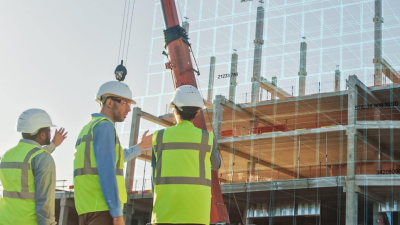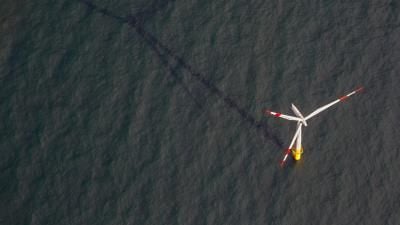
New technologies to improve health and safety performance
Discovering Safety joins forces with Safetytech Accelerator to build a Smarter Regulation Sandbox.
This page is approximately a 3 minute read
This page was published on

Susan Gourvenec, Royal Academy of Engineering
Susan is Chair in Emerging Technology, Intelligent and Resilient Ocean Engineering at the Royal Academy of Engineering. She is internationally recognised as an expert in offshore geotechnical engineering across academia and industry, and is a passionate educator and champion for equality, diversity and inclusion in engineering.
In a pledge to reduce reliance on fossil fuels, many nations are rolling out ambitious plans for offshore wind farms, often covering areas larger than major cities. But what happens when they are no longer in use? How do we safely get them from out in the ocean to a place to be responsibly decommissioned and disposed of?
When these large, engineered structures come to the end of their operational life, they must be safely decommissioned and dismantled, repurposed, recycled or disposed of. Done improperly, these practices can be dangerous for the workers involved and for the wider community due to unsafe practices and environmental pollution.
The sheer size and scale of offshore wind turbine decommissioning presents new challenges requiring specialised equipment, personnel and logistics along with coordinated and robust regulation for operations both offshore and once the infrastructure is brought onshore for management of all the components.
To spark change on this topic, Engineering X, founded by the Royal Academy of Engineering and Lloyd’s Register Foundation, led a workshop of international and cross-sector stakeholders in London last year.
In a subsequent report, titled Safer End of Life for Offshore Wind Infrastructure, four key actions for stakeholders emerged from these discussions. Greater collaboration to find effective end-of-life management that is mindful of contextual differences. The need to address gaps in regulation, while ensuring international coherence, and the proactive development of international circular end-of-life supply chains.
From these findings, four priority recommendations for action were outlined. These include:
The recommendations informed by the workshop are underpinned by safe, sustainable and considered design which falls to the responsibility of engineers. Making sure we can safely and responsibly manage the life cycle of the structures we erect is a challenge which has implications for all of society – especially for those working on the front line.
That’s why it’s important that the decommissioning of offshore wind structures is seen as a priority, a key consideration in the design and build phase and approached proactively rather than reactively.
To address this, an international End-of-Life (EoL) Committee for offshore wind has been inaugurated to lead a global shift towards safer, more sustainable life-cycle design and late-life management of offshore wind infrastructure. The committee takes a systems approach and provides a much-needed overarching view of current EoL efforts. Its aim is to bridge the gap between research, policy and industry internationally through collaboration, advocacy and cross-sector engagement.
To read the full report, please visit Safer End of Life for Offshore Wind Infrastructure Workshop report
